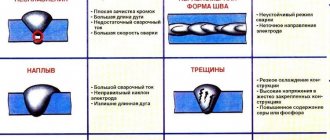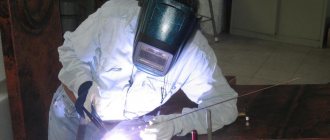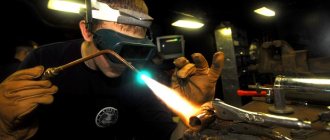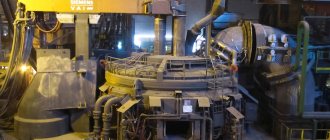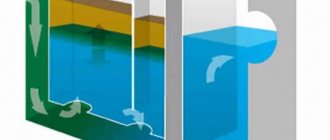Any industrial production, from very large to artisanal, always includes several technological chains. Various specialists are responsible for each stage of work, from receiving blanks to the warehouse and ending with accounting for finished products. A grinder is a worker responsible for bringing products to the required accuracy, and his place in the labor chain is usually (though not always) located closer to the end of the process.
General information
The manufacture of any products is subject to GOST standards and technological rules. Each part, successively passing through stages of processing, starting from the initial raw material, gradually approaches the level of accuracy provided for in the technical specifications. Here we are talking about tolerances, roughness classes, degrees of accuracy - qualifications. The grinder is responsible for bringing the product to the required finish and giving it its final shape. This is important both at the final stage (before sending the product to the customer) and before subsequent stages of processing.
Grinder is a separate profession, which, however, is closely related to related specialties, for example, turner or milling machine. After all, the essence of his work is the mechanical processing of surfaces of various materials. But this work is more subtle. After a milling or lathe, the part receives only a rough degree of tolerance; it is far from the required quality. The grinder must remove a thin surface layer of the material, and this can be a few microns.
The industry uses a wide variety of materials, all of which require final finishing. When people talk about the profession of a grinder, they most often mean working with metal. These can be either pure metals or their various alloys, and there are really a lot of them. And recently, various hybrid materials have begun to appear, combining the properties of metals and other inorganic substances.
But of course, grinding and polishing is also required for products made of plastic, glass, wood, porcelain, stone, and so on, there are a huge number of options. An experienced specialist must have a good knowledge of the properties of each material and the features of its processing. After all, even alloys with very similar properties may require different techniques when working with them.
§ 146. Grinder 5th category
Characteristics of the work . Grinding and finishing of complex parts and tools with a large number of transitions and settings of grade 6 and gear cutting tools of grade 6 precision, requiring combined fastening and precise alignment in several planes on grinding machines of various types and designs. Grinding and finishing of external and internal shaped surfaces and adjacent curved cylindrical surfaces, in places that are difficult to reach for processing and measuring. Grinding long shafts and screws using multiple steady rests. Grinding of complex large-sized parts and assemblies using unique equipment. Grinding of electrocorundum.
Must know: design features and rules for checking the accuracy of grinding machines of various types and universal and special devices; calculations related to setting up machines; rules for determining the most advantageous grinding mode depending on the material, shape of the product and brand of grinding machines; rules for setting up and regulating instrumentation and instrumentation; rules for determining cutting modes using reference books and machine data sheets.
Work examples
1. Drums - grinding and finishing of threads.
2. Cage rolls - grinding and finishing.
3. Rolls of rolling mills - profiling, grinding and finishing on unique roll grinding machines.
4. Shafts of high-power steam and water turbines - grinding and finishing.
5. Multi-crankshafts of powerful diesel engines - grinding and finishing of main and connecting rod journals, adjacent collars, fillets, flanges.
6. Multi-taper shafts and holes - grinding and finishing.
7. Support rims - final grinding of all parts included in the support rim assembly, supports, rotating parts, posts and clamp pins.
8. Micrometric screws for precision instruments - finishing after thread grinding.
9. Spools of hydraulic products - grinding and finishing of bodies and sleeves.
10. Multi-start gauges and plugs with trapezoidal threads - grinding and finishing.
11. Carriages, beds, bridges, machine supports - profile grinding.
12. Machine crossheads - grinding.
13. Steam turbine blades - profile grinding and external and internal polishing using a block with templates.
14. Complex matrices with cavities, cones located along radii and patterned surfaces - grinding.
15. Sliders - grinding.
16. Crossbars of a large-sized rotary machine - grinding the plane of the front guides for the slats.
17. Engine pistons with a diameter of over 500 mm - grinding and finishing.
18. Multi-place molds - grinding.
19. Broaches with a diameter of up to 125 mm, a length of up to 1200 mm - final grinding.
20. Beds of metalworking machines up to 3000 mm long - grinding of plane guides.
21. Stacks of a large-sized rotary machine - grinding the plane of the guides.
22. Spline worm cutters with a curved profile - profile grinding of teeth.
23. Cylinders of steam forging and stamping hammers and compressor cylinders - grinding and finishing.
24. Standards for the tail of steam turbine blades - grinding of the tail and slopes.
Responsibilities
As mentioned above, the main responsibility of the grinder is to know the properties of the materials with which he has to deal and to master the appropriate techniques for processing them. Without this knowledge, it is impossible to achieve the required cleanliness of parts.
The main tool of a specialist’s work is a variety of grinding machines. Therefore, his second responsibility is the ability to work on the entire range of equipment that is entrusted to him. This is not easy, especially in modern times, when automated lines and multi-axis machining centers are actively being introduced into production. Increasingly, a worker in this specialty becomes essentially an operator of complex computer equipment, and his work increasingly resembles the work of a programmer.
However, this only happens in the most advanced industries so far. In most cases, the grinder is still required to be able to work with his hands. In any case, this is a highly qualified worker who must be able to read drawings and have a good understanding of technological regulations.
It must be remembered that the grinder often has increased responsibility for the success of the entire production process. He deals with micron precision, which means there is an increased risk of screwing up the part by simply cutting off a little more of the surface layer than required according to the technical specifications. Therefore, the quality of personal responsibility can be called one of the main ones for those who want to get this profession.
In addition, you can specify other qualities necessary to work as a grinder:
- It is mandatory to have a technical education, at least graduating from a secondary specialized educational institution in a working specialty.
- A technical mindset is also desirable; you need to feel simple and comfortable surrounded by machines and complex equipment, so that you simply like all these machines.
- There must be a well-developed spatial imagination, this makes it easier to imagine the parts being processed in volume.
- Fluently navigate technical documentation, know the basics of engineering graphics and drafting.
- Attentiveness and scrupulousness in work, readiness for long monotonous work are important.
Centerless grinding
This technology is characterized by the fact that the workpiece is not fixed in the centers. In this case, grinding of metal parts takes place by applying rotation to only two grinding wheels, between which the workpiece is placed. In the central part there is a knife made of stainless steel. It eliminates the possibility that the product will fail due to displacement or become slightly jammed.
The use of such equipment can significantly speed up the grinding process. This is due to the fact that two abrasive wheels are used at once. There are simply a huge number of machines on sale that operate on the principle of centerless grinding.
Centerless grinding
Place of work
Grinders are trained primarily to work in factories, both in the main production and in various auxiliary departments. The largest number of vacancies opens in heavy industry, mechanical engineering, aircraft factories, Rosatom, and the oil and gas sector. However, specialists are needed not only in large cities. It is also quite possible to find work in the regions. For example, in repair shops or workshops at agricultural enterprises, in car parks and even in small private establishments - wherever the manufacture of precision products is required.
Sanding flat surfaces
Flat body blanks made of various metals are often processed. The operation to change the surface roughness is characterized by the following features:
- The workpiece is placed on a special table, which ensures reliable fastening. Fixation can be mechanical or magnetic.
- The main rotation is transmitted to the abrasive wheel, reciprocating the workpiece or tool.
Sanding flat surfaces
By selecting a wheel with the most suitable profile, it is possible to process the most complex shapes. During operation, coolant can be supplied to the contact area between the tool and the workpiece.
Wage
The level of payment for a specialist in this profession depends on the enterprise where he works. But in general, the specialty is considered qualified, so you can count on a good salary. The average salary level is around 40-42 thousand rubles per month. The maximum can reach 150 thousand if you manage to get a job at a large plant that fulfills stable orders, for example, in the defense industry.
It must be borne in mind that almost everywhere workers with experience are required. A technical school graduate can get a job at a factory, but at first he won’t have to count on a high salary.
Processing parts before grinding
As previously noted, sanding is the finishing step. Before it is carried out:
- Rough turning of metal. Due to this operation, the workpieces are given the required shape and dimensions, taking into account the allowance.
- Finish turning is carried out to give the required dimensions.
- Milling is another technological operation that involves mechanical removal of metal. Most often, housing parts and gears are milled.
- Heat treatment. In order to significantly increase the surface hardness and strength of the product, hardening is carried out. The fragility of the structure can be reduced by tempering and annealing. In some cases, thermochemical treatment is carried out, which involves introducing certain chemicals into the surface layer.
Processing parts before grinding
When developing processing modes, allowance for all technological operations is taken into account.
Final processing: what is it and what is it for?
This is a technological operation to remove the top rough layer from the outside and inside of a part. It is produced with the aim of obtaining high-precision dimensions and eliminating roughness, which can lead to increased friction, and as a result, rapid wear of the sharpened sample. There are many subtypes of manipulation, each of which involves the use of special equipment and equipment.
The workpiece being processed can be flat or cylindrical, and there are also special attachments for small gaps, holes and the inside.
There are a number of points to consider when getting started:
- This technology is not used in cases where it is necessary to remove a large diameter range. Only the thinnest layer can be removed in this way.
- Sanding is designed to achieve a certain degree of roughness, which means that ideal smoothness is not always achieved.
- It is best to first perform thermal work on the product and then begin grinding.
What does grinder training include?
Training in a working profession with the issuance of a grinder’s certificate allows you to gain knowledge of performing grinding work on wood and metal.
Reference! Sander's crust is essential for polishers, sanders and tool sharpeners.
The course allows you to obtain a standard grinder certificate. It addresses a wide range of issues that allow the applicant to immediately begin working in his specialty after graduation:
- system of tolerances and fits, accuracy grades, roughness parameters;
- purpose, properties and methods of application for grinding cutting fluids;
- the main types of defects when grinding the surfaces of simple parts with dimensional accuracy of 9-11 qualifications, its causes and methods of prevention and elimination;
- types, design, areas of application and rules for using devices for dressing grinding wheels on grinding machines;
- device, controls of grinding machines, rules for their use;
- methods, rules and techniques for dressing grinding wheels on grinding machines;
- quality control techniques for dressing grinding wheels;
- procedure for checking the serviceability and performance of grinding machines.
The distance learning course for a grinder is a direction for obtaining a working profession (Profstandard 40.076), which is in demand in the field of mechanical processing of metal products within the framework of industrial production.
Sample ID
ETKS (Unified Tariff and Qualification Directory of Work and Professions of Workers)
Important point! Depending on the category assigned to the student, the timing of theoretical and practical classes may vary.
The Grinder training program covers the following theoretical and practical issues:
Select rank
- 2nd category
- 3rd category
- 4th category
- 5th category
- 6th category
Metal grinding and polishing: differences
Both tasks have a common name - final or finishing processing, but their goals are slightly different. The product will most likely be polished to achieve an aesthetic effect, and sanded to improve its functional qualities. Hence the differences. In the first option, the softest, most gentle impact is used - the discs are covered with fine abrasive, the speed is not so strong, and the duration is shorter. This leads to the fact that there is no intrusion into the structure of the steel, and no connections between the elements are destroyed. Some products do not even undergo this procedure if they do not need to increase their attractiveness, that is, they are not under the gaze of others.
A more serious stage is grinding. This is a rather rough removal of the top layer, in which the destruction of internal qualities, and not just the surface coating, can occur.
There is one more difference. In the process of polishing an object, special pastes and mastics are used; they are a connecting link that allows you to limit the surface from strong impact.
M.O.
— Tell us about yourself: what is your job and how long have you been working in this profession? •I am a grinder at EPK Volzhsky. I have been working for more than 15 years.
— Why did you choose this profession? •Because the situation in life required it.
— Are you satisfied with your choice? •No.
— Was it difficult to master your profession? What kind of education do you need to get for this? •It is not difficult to master the profession if you have a competent mentor and a strong desire. You need to get an education: starting from vocational institutions and ending with polytechnic universities - if desired.
— Do a person who has decided to become a specialist in this field need any special qualities and skills? • Yes, resistance to stress, moral stability towards the team, physical strength, attentiveness to equipment, composure, patience, respect for the profession and the people around you in this profession, responsibility and production discipline are also important.
— What difficulties do you encounter in your work? • Quality and untimely delivery of workpieces, working conditions, illiterate management of engineering and technical workers (E&T).
— What is the most interesting thing in your work? • The technological process of manufacturing new products, fulfilling the plan, receiving a bonus for exceeding the plan for the production of quality products and so that the customer is satisfied with the manufactured products.
-Does your profession allow you to reveal your creative abilities and express yourself?•No.
— Did your childhood dream about your future profession come true? • No.
— How useful and important is your profession for our country? • Very useful, because bearings from our plant (EPK Volzhsky) are used for any transport.
— Does your profession bring good income? •No.
— Who would you recommend your profession to? • No one, because this profession is poorly paid.
— What would you like to warn those who are planning to get the same profession as yours? •About the need to be responsible, attentive, stressed and mentally stable, about physical difficulties and unfair pay
— How do you see your profession in the future? • I won’t live long enough.
—Are you coping with your work? •Yes, I fulfill my plan within a month.
— Does your profession evoke more positive or negative emotions in you?•50/50
— On a scale of ten, how can you rate your fatigue after a working day?•9 out of 10
— What motivates you to go to work?• Salary
— What one (two) words or phrases can you use to describe your work? •Physical labor, heavy work
— Do you think that your profession, and subsequently your work, is prestigious in your city? • No, I don’t think so, because there are a lot of other prestigious professions.
— In your opinion, what is worse: physical fatigue (like you) or moral fatigue (like, for example, psychologists)? •I think it’s hard to do both.
The interview was conducted by Maria Zinner, 1st year student, State Educational Institution “VPT”, Volzhsky, Volgograd Region
Author's spelling and punctuation preserved
